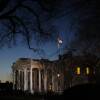My monthly newsletter from the American Automobile Association, better known as AAA, arrived swathed in pink with a cheery note in the corner to "Think Pink.” It’s Pinktober, the month during which we are awash in pink, all in the name of Breast Cancer Awareness. Every October, manufacturers paint, tint, dye, or otherwise bathe both recognizable and unique products in hues from delicate rose to bold fuchsia. The original homemade salmon-colored ribbon was abandoned years ago in favor of the now familiar bright pink one. But even that ribbon is almost lost in an ocean of commercialized items. Breast cancer survivor Laurie Mileur told California’s The Cambrian newspaper she “cringes” every October.
2017 products include pink water bottles, make-up brushes, boxing gloves, watches, ray ban sunglasses, Athleta sports bras, Food Should Taste Good tortilla chips, OPI’s pink limited edition pink shatter nail polish, Avon’s cancer crusade jacket, pink polka dotted dishes, and GoFit’s pink cross fit training glove. Plus, there are enough pink make-up and skin care line products to stock a small Sephora — everything from Murad’s Hydrate for Hope Sun Balm to Giovanni D:tox Eco Chic Cosmetics, to 3Lab’s Perfect BB Cream, RevitaLash Advanced mascara, and Estée Lauder’s Pink Ribbon Knockout Eyes Collection.
In recent years, critics like the Breast Cancer Action (BAC) advocacy group have become more vocal about the month-long pink shilling for breast cancer. BAC notes that most of the companies donate very little of the purchased price of the products. In fact, most of the aforementioned companies offer only a 10 percent donation with purchase, one as little at 5 percent, and another never mentions a dollar amount. It’s why Breast Cancer Action developed its toolkit, Critical Questions for Conscious Consumers, to help consumers figure out how donated money is really spent. Of course, a 100 percent donation makes it easy. A purchase of the Avon pink jacket nets 100 percent of the proceeds to breast cancer. Estée Lauder is also donating 100 percent of the suggested retail price for its special eye shadow collection. It’s part of Estée Lauder’s 25th anniversary celebration as the founding corporation of Breast Cancer Awareness Month.
But, ironically, breast cancer activists claim Estée Lauder is one of the biggest perpetrators of so-called pinkwashing — corporations who donate generously for breast cancer research, while at the same time manufacturing products known or suspected of causing cancer. Estée Lauder and other companies still use chemicals like parabens, even as other corporations like Johnson and Johnson have removed them from product production. Breast cancer survivor Laurie Mileur observes it is “an inconvenient truth that breast cancer is a lucrative industry.”
I don’t want this — my annual rant about the commercialization of breast cancer awareness — to be misinterpreted. Too many of the 250,000 women diagnosed yearly with breast cancer are dear friends. I’ve watched them struggle through the pain and trauma of diagnosis and treatment. I’m grateful for their survival, but I don’t want their illness to be cheapened by pink paraphernalia and pink shrouded corporate posturing. Think before you pink.





